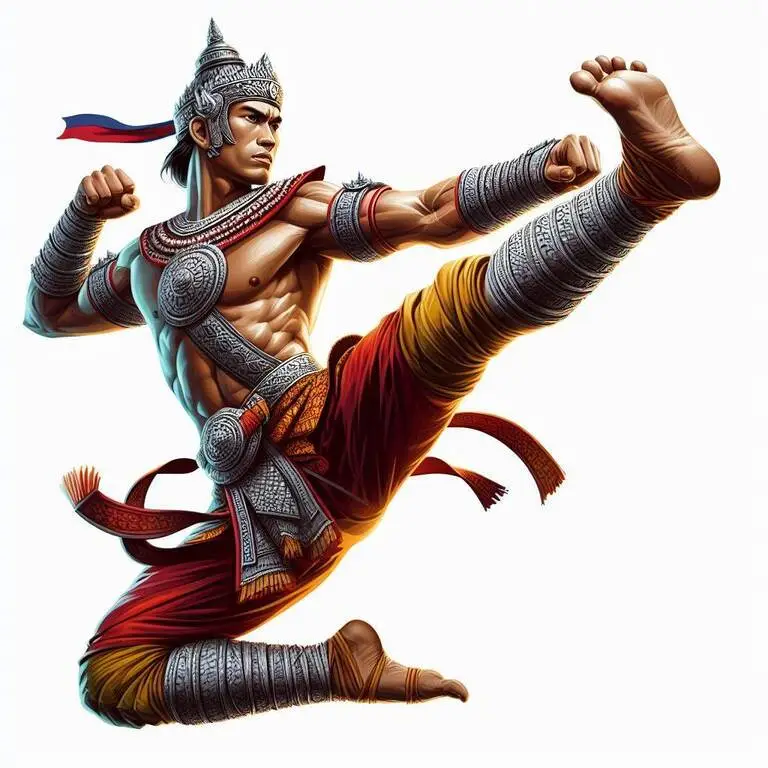Bokator | Cambodian martial art
Bokator Definition: Derived from Bok (smash) and Tao (tiger), Bokator translates to 'smashing the lion/tiger.' It symbolizes the martial art's powerful strikes.

Bokator, also known as Kun Lbokator, is an ancient Cambodian martial art that has been passed down through generations. With a history dating back over a thousand years, Bokator is a comprehensive fighting system that incorporates a wide range of techniques, skills, and traditions. In this article, we will explore the origins, techniques, training methods, and cultural significance of Bokator, shedding light on this unique martial art form.
### Origins of Bokator
Bokator traces its origins back to the ancient Khmer Empire, which once ruled over much of Southeast Asia, including present-day Cambodia. The roots of Bokator can be found in the military training and combat techniques used by the Khmer warriors to defend their kingdom and conquer their enemies. Over time, these techniques evolved and were refined into the elaborate system of Bokator that we see today.
According to legend, Bokator was created by the deity Preah Bath Troap, who taught the art to a select group of mortals to help them defend themselves against invading forces. The name "Bokator" is derived from the Khmer words "bok" (to pound) and "ator" (a lion), symbolizing the power and ferocity of the martial art.
### Techniques of Bokator
Bokator is known for its wide array of striking, grappling, throwing, and weapon techniques. Practitioners of Bokator learn to use their entire body as a weapon, employing punches, kicks, elbows, knees, and various hand strikes to attack their opponents. In addition to empty-hand techniques, Bokator also includes training with traditional weapons such as swords, staffs, knives, and grappling hooks.
One of the distinguishing features of Bokator is its use of animal-inspired movements and techniques. Practitioners learn to mimic the movements of animals such as the tiger, crane, snake, and elephant, incorporating their agility, strength, and ferocity into their fighting style. These animal forms not only make Bokator visually striking but also add depth and complexity to the art.
### Training Methods
Training in Bokator is rigorous and demanding, requiring discipline, dedication, and perseverance. Students start by learning the basic stances, footwork, and strikes of Bokator, gradually progressing to more advanced techniques and combinations. Sparring and partner drills are an essential part of training, allowing practitioners to test their skills in a controlled environment.
In addition to physical training, Bokator also emphasizes mental and spiritual development. Practitioners are encouraged to cultivate virtues such as humility, respect, and integrity, both inside and outside the training hall. Meditation and breathing exercises are often incorporated into training sessions to help students focus their minds and develop inner strength.
### Cultural Significance
Bokator holds a special place in Cambodian culture and history, serving as a symbol of national identity and resilience. During the Khmer Rouge regime in the 1970s, many aspects of Cambodian culture, including Bokator, were suppressed and nearly lost. However, in recent years, there has been a renewed interest in reviving and preserving this ancient martial art.
Today, Bokator is not only practiced as a form of self-defense but also as a way to connect with Cambodian heritage and traditions. Competitions and demonstrations are held regularly to showcase the skills and techniques of Bokator practitioners, attracting both local and international audiences. In 2016, Bokator was inscribed on UNESCO's Representative List of the Intangible Cultural Heritage of Humanity, recognizing its cultural significance and value.
Bokator, with its rich history, diverse techniques, and cultural significance, is a martial art like no other. Rooted in ancient traditions and passed down through generations, Bokator continues to thrive in Cambodia and beyond, captivating audiences with its beauty and power. As more people discover and appreciate the art of Bokator, its legacy is sure to endure for many years to come.
Climbodia Green young FT Horse Riding Cambodia Iron fitness Kayak & Co Kampot Quad Bike Rush All Terrain Somnang E-Sport Sourt Quad Bike Yoga Barn Yoga Palace
